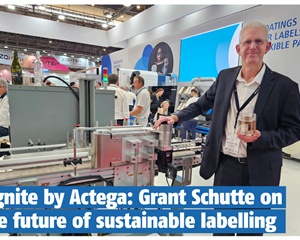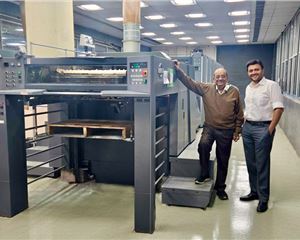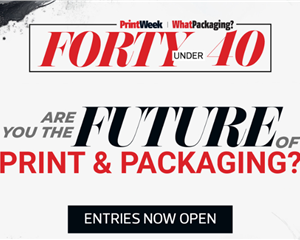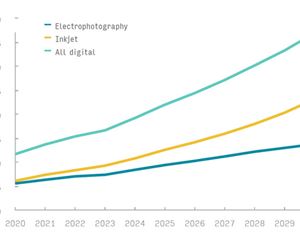Tantalising week at the PrintWeek Jury Meet
The 31-member jury noted that the industry is moving beyond the nuts-and-bolts, with binding and tech-enhancements boosting quality. Digital printing is now a core method for creativity. Packaging and labels are telling stories about sustainability with innovative structures that enhance the consumer experience. A report by Prabhat Prakash
29 Sep 2025 | By Prabhat Prakash
The annual PrintWeek Awards Jury Days from 9 to 11 September 2025 unfolded as a masterclass in the evolution of the Indian publishing, digital print, label, and packaging industry. Across three days, a panel of 31 jurors comprising publishers, design specialists, brand consultants, and packaging connoisseurs evaluated a total of 306 entries that demonstrated a clear, upward trend in quality, innovation, and an unwavering focus on the end-user. The overarching consensus was clear: the Indian industry has moved far beyond the fundamental act of ‘putting ink on paper.’ It has become a sophisticated, collaborative, and consumer-centric enterprise where the finer details tell the most compelling stories.
Day one: As book boom lifts off, focus on tech-specs
The week began with a breakfast briefing that set a high standard for the days to follow. Ramu Ramanathan, editor of PrintWeek and WhatPackaging?, challenged the jury to look past the surface. As he put it, “Putting ink on paper is just 10% of the job. 90% of a book lies in binding and the genius of paper engineering. The spine of a book is like the spine of the human body; it tells the story of whether a book has been produced well.” This philosophy became the guiding principle as jurors assessed a range of entries that showcased a remarkable focus on binding and finishing.
Among the key trends noted by Red River’s Dibyajyoti Sarma were the intricate printed edge trims, multi-coloured book edges, and hardbound books with smooth, rounded corners. He also highlighted the increased use of “spot-UV finishes and velvet laminations on covers,” which add a tactile and visual richness to the final product.
The education category, which typically features mass-produced formats, revealed a significant and thoughtful shift. The jury observed a shift toward lighter and smarter textbooks, driven by the growing awareness that children need to carry less weight. Publishers are not reducing content but are instead focusing on efficient formatting and clever use of paper to reduce bulk while retaining clarity and readability.
One of the standout entries was Letters to my Dad, a book that captivated jurors with its unique and engaging binding. Rajnish Shirsat from BookMyStory was particularly impressed, noting that the hardbound book with millboard was “neatly stitched and designed to hold 24 folded letters.” Despite the potential challenges of a complex format, Shirsat commended the entry, stating that “the consistency in colour, binding, and overall finish made it impressive.” The book’s design, which encouraged personal interaction from the reader, was a key talking point, demonstrating how print can create a truly immersive experience.
Book consultant Surendra Babu highlighted the overall improvement in standards, stating, “The binding quality has gotten better when compared to the previous editions. Technological advancements have paved the way for improved binding quality across the industry.” One trend that’s discernible is, book print firms are opting for in-house perfect binding and saddle-stitching.
This theme of technological advancement enabling greater creativity was a constant refrain. Babu reflected on how, in the early 1980s, printing quality posed a challenge to design books, but “the recent developments no longer pose a challenge.” He urged designers to push the limits with more innovations. Echoing this call for collaboration, Bhavika Shah from Beyondesign added that book designers should work more closely with book print firms, paper suppliers and adhesive manufacturers to produce top notch books. The session concluded with an observation from Tasneem Vasi of CTRL M Print Management India, who called for “increased industry interactions, encouraging book printers to share their wealth of knowledge with book publishers.”
Day two: A world of possibilities with digital print
Day two shifted the focus to the transformative power of digital printing. The jury was fascinated by the entries and how digital technology is now seen not as a limitation, but as a gateway to new possibilities. As KV Sridhar from Nihilent summarised, “There is a huge difference in the way printing is done today compared to a decade ago. Quantity does not matter; only quality does. The diversity of work with one technology is astounding.”
This sentiment was reinforced throughout the day. Mayuri Nikumbh from Conran Design Group declared that digital printing is “no longer a technology that’s just used for mock-ups and proofs; it has become the end product.” Kinnari Gala from All About Packaging agreed, noting that the output of digital printing is “as good as the best of gravure or litho printing.” The jury praised the creativity, and innovative use of substrates. Ashwini Deshpande from Elephant Design found it “fascinating to see what they are experimenting with various substrates.” Be it: coated and uncoated papers as well as polypropylene (PP) facestocks, without the need to apply varnish. As well as paperboard, fabrics and polycarbonate, also print jobs which eliminate the often cumbersome varnishing step in their production workflow.
In the Fine Art printing category, a sample from Saffron Art’s Tyeb Mehta drew particular attention. Jurors were captivated by its ability to reproduce a gamut of colours in screen printing, despite undergoing multiple rounds of proofing and adjustments. Nikumbh highlighted how the “degree of detail and technique was clearly visible.” A genuine work of art.
The jury also celebrated entries in the wedding album and invitation categories for their classy, minimalist designs combined with creative embellishments, intricate laser-cut frames, and metallic elements like gold foiling. Deepti Kshirsagar from TCT Strategic Branding emphasised the importance of mastering this technology, saying, “We must know how to deploy digital to our benefit.” Meanwhile, Jayashree Joshi from Goethe-Institut called for greater public awareness, stating, “The knowledge in the Studio should be shared with each and every individual. Industry-outreach is missing.” She added, “We need more knowledge forums, tech workshops and print and packaging celebrities, so that we know who is India’s Gutenberg.”
A key conversation during the day revolved around the context and environment in which a printed piece exists. KV Sridhar noted how the creasing and binding of a food menu could be a critical design element in a bar. Vinita Bhatia, editor, Campaign India, echoed this, pointing out how a menu with gold foil highlights the text in a dimly lit bar. These digital print samples, the jurors agreed, were a testament to intelligent design and clever use of finishing techniques. The day concluded with the consensus that digital printing’s strength lies not just in short runs, but in its ability to deliver “creativity, consistency, and innovation at scale.”
Day three: Packaging as a silent salesman
The final day brought together packaging and label aficionados to judge a staggering 90 entries. The clear emphasis was on developments in conversion techniques, premiumisation, and the art of storytelling through packaging.
Sustainability was consistently at the forefront. Koel Bhadra of L’Oreal was particularly impressed by a “100% paperboard rigid box,” noting that the packaging community has “moved beyond imagination.” She also highlighted the prioritisation of the unboxing experience, stressing that packaging as an experience must go hand-in-hand with functionality, sustainability, and innovation. Sheetal Dandekar of JB Chemicals shared her perspective on the industry’s evolution, stating, “Over the last decade of being a juror at the PrintWeek Awards, labels have scaled new heights in terms of staying ahead of the curve on food safety and compliance, sustainability, and brand expectations.”
Sanjay Ghoshal of Diageo India reflected on the “massive shift in packaging in the last 25 years through sustainability” and noted that the Award samples had managed to “inculcate sustainability in their packaging without any increase in cost.” He celebrated “uncommon shapes that disrupt shelves and catch the eye of the consumer.” His message was clear: “Progress must be holistic among all stakeholders within the industry, such as converters and manufacturers.”
The theme of storytelling was a central focus. Nitin Nair of Zydus Wellness emphasised how labels now do more than just provide information; “they tell a story.” Ruma Ghatak of Nestle India echoed this, spotlighting the importance of structural designs and material selection that prioritise consumer benefit. She called for open dialogue within the industry on themes like “screen printing and hybrid printing and the use of Braille in F&B packaging.”
Functionality was also a key metric. Amit Saurkar from Marico rooted for functional designs like perforations in airline packs. Saurkar said he was very impressed with labels that are durable, resistant to scratches, heat, solvent, and friction without extra coating steps; overprintable; and sustainable – being compatible with recyclable, paper-based materials as well as PP facestocks. He said the Jury Meet 2025 was a fresh departure from the past two editions (2024 and 2023) and provided an insight into how the packaging ecosystem has evolved. He, like the other ten jurors on Day Three spotlighted three themes: sustainability, smart production, and end-to-end integration.
Riddhi Patil of Glenmark praised the overall exhibition of packaging and eloquently stated, “Packaging is always a silent salesman.” One of the key innovations in the labels category was The Skin Story’s label, which peels off to reveal a calendar with scratch-off ink which can be used to keep track of serum usage. A simple yet functional purpose of how a label can do more than just provide information.
Dr Geetal Mahajan of Kenvue concluded the day by noting how brands are making a conscious effort to move beyond plastic. She found a rigid box lined with 100% organic cotton especially interesting. This, she said, was a prime example of the industry’s commitment to using “conscious packaging materials and its reusability.”
A standout trend was the adoption of specialty printing by smaller, homegrown brands. Chinmaya Dandekar of Godrej Consumers, said, “Homegrown brands are increasingly not only adopting, but are mastering the art of speciality printing.” He specifically highlighted how “homegrown whiskey brands are paving the way forward by experimenting with impressive tactile touches and finishes.”
Raju Kalgutkar of Piramal Consumer Healthcare pointed out significant advancements in sustainability, craftsmanship, intricate detailing, and post-press jobs. He observed the innovative use of “holographic and letter-lens effects” in the pharma space and an increased emphasis on personalisation, citing a special limited edition Halloween product packaging featuring glow-in-the-dark elements.
As Noel D’Cunha, the brain behind the Jury Meet said, “The PrintWeek Awards Jury Meet was a print and packaging ballet which showcased the clout of a choreographed production line. Kudos to all the companies and let’s celebrate the shortlisted companies and winners on 13 October 2025 (Monday) at The Westin Mumbai Powai Lake."












 See All
See All